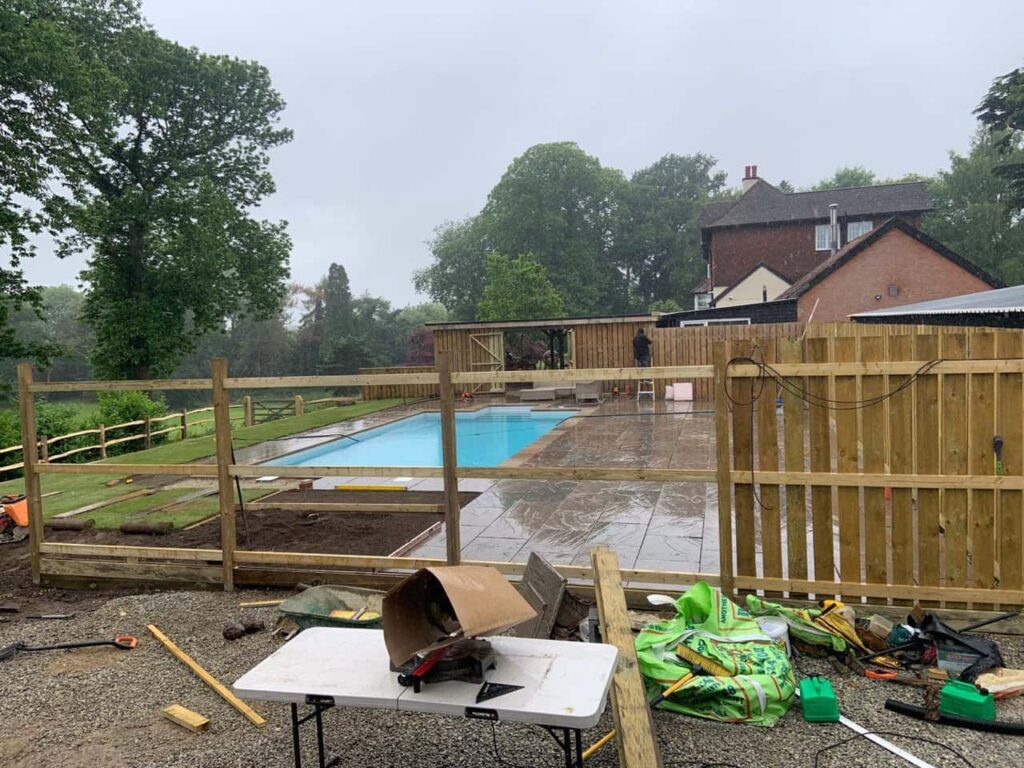How to Handle Wood Fence Panel Expansion and Contraction
Introduction: Wooden fences are a timeless choice for enhancing the beauty and privacy of your property. However, as a natural material, wood is susceptible to expansion and contraction due to changes in temperature and humidity. Understanding and managing these fluctuations is essential for maintaining the longevity and stability of your wood fence panels. In this blog post, we’ll explore the causes of wood fence panel expansion and contraction and provide tips on handling them effectively.
Understanding the Causes
- Temperature Fluctuations: Wood fence panels expand in hot weather and contract in cold weather. This natural response to temperature changes is due to the moisture content in the wood fibres.
- Humidity Levels: High humidity causes wood to absorb moisture from the air, leading to expansion. Conversely, low humidity causes the wood to release moisture and contract.
- Rain and Moisture: Direct exposure to rain or snow can cause temporary expansion as the wood absorbs moisture. Subsequently, as the wood dries out, it contracts.
Handling Wood Fence Panel Expansion and Contraction
- Proper Installation: Start with a solid foundation. Ensure your wood fence panels are installed correctly with the right spacing between them. This allows room for natural expansion and contraction without causing warping or buckling.
- Seal and Protect: Apply a high-quality wood sealer or stain to your fence panels. This protective layer helps minimise moisture absorption and loss, reducing the extent of expansion and contraction.
- Maintenance: Regular maintenance is crucial to the longevity of your wood fence panels. Inspect your fence annually and reapply sealer or stain as needed, typically every 2-3 years. This helps maintain a protective barrier against moisture.
- Adequate Space: When installing your wood fence panels, leave a small gap between each panel. This gap allows for expansion and contraction without causing structural issues. Consult a professional installer to determine the appropriate spacing for your fence design.
- Climate Considerations: Be mindful of your local climate when selecting the type of wood for your fence. Some wood species are more resistant to expansion and contraction than others. Cedar and redwood, for example, are known for their stability in various weather conditions.
- Seasonal Adjustments: You may notice changes in your wood fence’s appearance during extreme weather conditions. These changes are typically temporary; your fence should return to its normal state as the weather stabilises.
- Professional Maintenance: If you notice severe warping or damage to your wood fence panels, it’s advisable to consult a professional for repairs or replacements. Addressing issues promptly can prevent more extensive damage.
Conclusion: Wood fence panels offer timeless charm and privacy to your property but are subject to expansion and contraction due to temperature and humidity changes. By understanding the causes of these fluctuations and implementing proper installation, maintenance, and protective measures, you can ensure that your wood fence remains structurally sound and visually appealing for years.
Call us on: 01732 440 993
Click here to find out more about Fast Fix Fencing Tonbridge
Click here to complete our contact form and see how we can help with your fencing needs.

